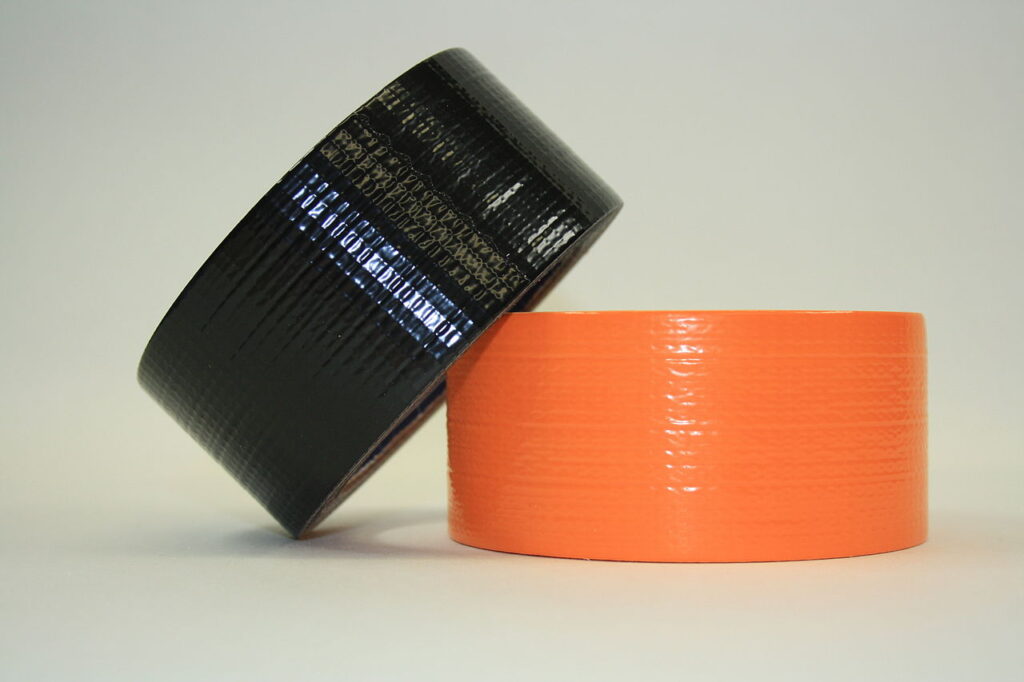Is Gorilla Tape Removable?

Gorilla Tape’s renowned adhesive power often raises questions about its removability. While it can be removed, the process isn’t always straightforward. Users might find themselves employing heat, solvents, or even abrasives to tackle stubborn residue. This challenge highlights the importance of preparation and technique when working with such a formidable adhesive. Those maneuvering the intricacies of Gorilla Tape removal will discover intriguing methods and tips that promise to ease the task.
Understanding Gorilla Tape’s Bonding Properties
Gorilla Tape exhibits a formidable bonding capability, thanks to its aggressive natural rubber adhesive, which guarantees a robust attachment to a variety of surfaces such as steel, wood, and fiberglass. This adhesive’s bonding mechanics are enhanced by a tensile strength of 258 N/25mm, ensuring durability and resistance to environmental stress. Users appreciate its adhesive longevity, as the tape maintains its integrity under continuous service temperatures up to 194°F and intermittently at 302°F. Its chemical resistance, coupled with waterproof polyethylene film, prevents degradation, making it a reliable option for moisture-prone environments. Despite these strengths, the tape’s permanent bond characteristics mean users must be cautious of potential surface damage during removal, highlighting a trade-off between durability and reversibility.
Step-by-Step Tape Removal Process
Removing Gorilla Tape effectively requires a strategic approach to minimize potential surface damage. Several tape removal techniques cater to different adhesive types. Manual methods like using the tape as a blotter or employing a gentle scrape with a plastic card can lift residue without harming surfaces. For stubborn adhesive, heat application via a hairdryer or warm water immersion softens the glue, facilitating easier peeling. Solvent solutions such as isopropyl alcohol or mineral spirits can dissolve adhesive, though caution is advised to avoid surface damage. Abrasive techniques like putty knife scraping or using a Magic Eraser work best on hard surfaces. Specialized products such as Goo Gone offer a commercial solution for multi-layered residues, ensuring a clean and efficient removal process.
Cleaning Residue Effectively
When tackling the challenge of cleaning adhesive residue effectively, selecting the right solvent or commercial remover is crucial. Mineral spirits prove effective for residue removal, especially when applied with a rag. For those seeking rapid results, acetone works quickly but requires caution on sensitive surfaces. Rubbing alcohol offers a user-friendly solution, dissolving adhesive without harsh fumes, while citrus-based cleaners like Goo Gone guarantee safe residue removal without harming finishes.
For particularly stubborn residue, paint thinner serves as a robust backup. Commercial adhesive solutions such as 3M Adhesive Remover excel at removing sunbaked adhesives, and PB Penetrating Catalyst is excellent for penetrating thick residue layers. Meanwhile, Dawn Power Dissolver stands out for tackling persistent residue, outshining weaker alternatives with its powerful cleaning capabilities.
Comparing Gorilla Tape to Other Adhesive Tapes
After mastering the art of cleaning adhesive residue, it’s beneficial to evaluate how Gorilla Tape stacks up against other adhesive tapes available on the market. In the Gorilla Tape vs. Duct Tape analysis, Gorilla Tape exhibits superior adhesive strength, holding up to 30 lbs, compared to Duck Ultimate Tape. This makes Gorilla Tape more suitable for long-term applications, while Duck Tape’s thinner profile allows for easier removal. Gorilla Tape’s robust performance against environmental factors, such as UV radiation and weather, guarantees durability and less residue, unlike traditional duct tapes. However, its strong bond can complicate removal, especially after extended use. Despite this, Gorilla Tape outlasts competitors like Flex Tape and T-Rex Tape, maintaining adhesion even under harsh conditions.
Best Practices for Application and Removal
While Gorilla Tape offers unmatched durability and strength, removing it can present challenges without the right techniques. For effective application, users should clean surfaces to minimize dust and grease, enhancing adhesion. Applying the tape slowly reduces stretching, aiding in residue prevention. When removal is necessary, using fresh tape as a blotter effectively transfers adhesive residue. Mineral spirits or citrus-based cleaners work well but require testing on sensitive surfaces to avoid damage.
On more resilient surfaces like stone or brick, pressure washing or a baking soda paste can remove residue without abrasives. For delicate materials, safe removal involves applying removers in cool conditions and testing on hidden areas first. Using terry cloth enhances scrubbing, ensuring surfaces remain residue-free post-cleaning.
Frequently Asked Questions
Can Gorilla Tape Be Reused After Removal?
Gorilla tape’s durability limits its reuse potential after removal, especially if it’s aggressively peeled off. Proper storage and gentle removal techniques might preserve its adhesive qualities, but residue often hinders reapplication, affecting user experience negatively.
Is Gorilla Tape Safe for Use on Painted Walls?
Gorilla Tape isn’t ideal for painted walls due to potential wall surface damage and adhesive residue. Users report that removing the tape often leaves behind sticky remnants, requiring careful and potentially damaging methods to clean effectively.
How Does Temperature Affect Gorilla Tape’s Performance?
Temperature extremes greatly impact Gorilla Tape’s adhesive strength. In high temperatures, adhesion weakens above 140°F, while cold climates see it functioning down to -40°F. Prolonged heat softens the adhesive, lessening grip, unlike sub-freezing conditions where strength retains.
Can Gorilla Tape Be Painted Over After Application?
Gorilla Tape can be painted over after application, but its paint compatibility hinges on tape adhesion and surface texture. Users should ascertain proper adherence and cleanliness for ideal results, considering that movement or environmental factors may affect outcomes.
What Are the Environmental Impacts of Gorilla Tape?
Gorilla Tape’s environmental impact is significant. It lacks biodegradable alternatives, leaving adhesive residue that contributes to pollution. Its non-biodegradable materials persist in ecosystems, potentially harming wildlife and increasing landfill waste, requiring careful disposal.




